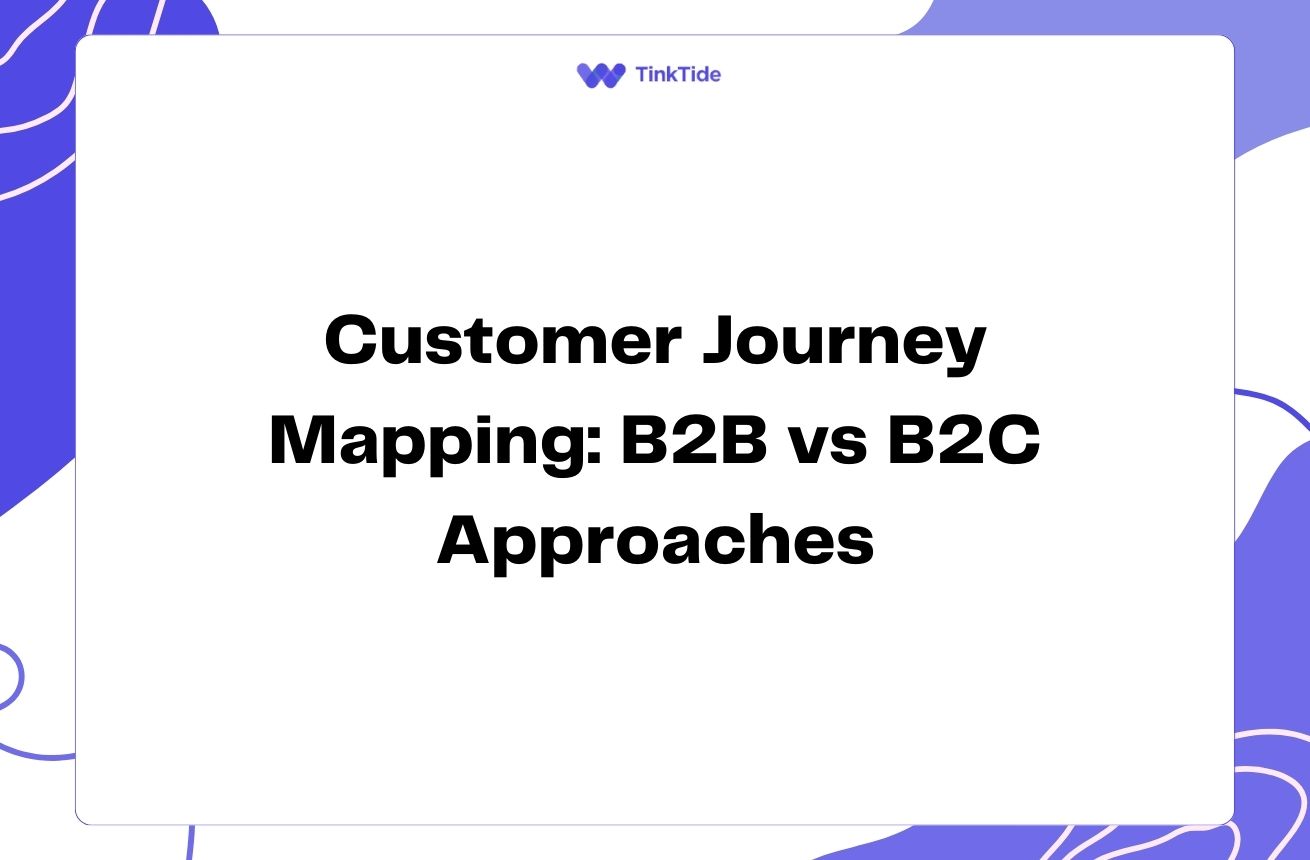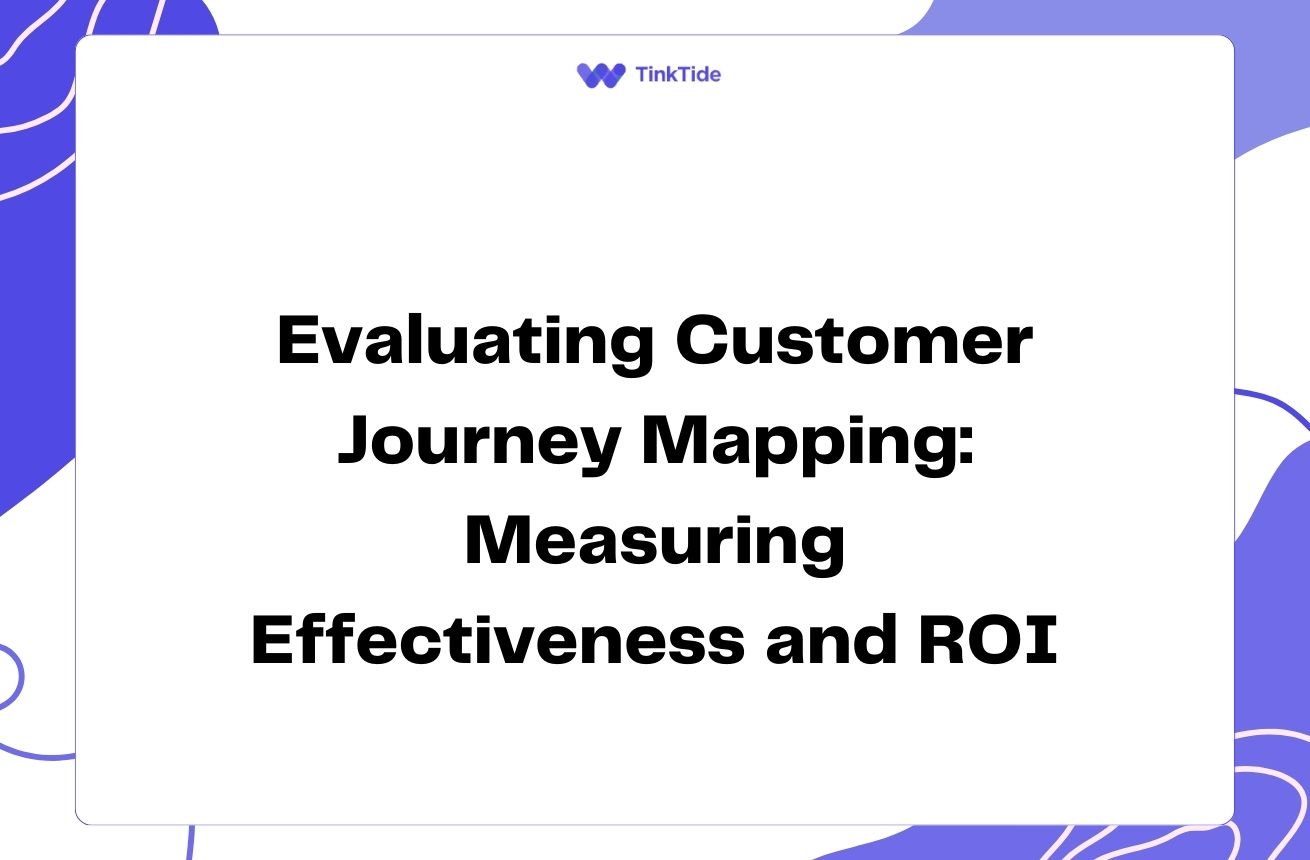Avoid These Common Errors in Customer Journey Mapping
Understanding Customer Journey Mapping
Customer journey mapping is a powerful tool for businesses to visualize and understand the experiences their customers have while interacting with their brand. It's like creating a roadmap of customer touchpoints, emotions, and actions throughout their relationship with your company.
When done correctly, customer journey mapping can provide valuable insights into customer behavior, pain points, and opportunities for improvement. However, many businesses fall into common traps that can undermine the effectiveness of their mapping efforts.
In this article, we'll explore the frequent errors in customer journey mapping and provide strategies to avoid them, ensuring you get the most out of this crucial business strategy tool.
Common Errors in Customer Journey Mapping
Let's dive into the most frequent mistakes businesses make when creating customer journey maps:
- Focusing solely on company touchpoints
- Neglecting emotional aspects of the journey
- Failing to involve cross-functional teams
- Overlooking the importance of data
- Creating static, one-time maps
Error 1: Focusing Solely on Company Touchpoints
One of the most common errors in customer journey mapping is concentrating exclusively on the touchpoints where customers interact directly with your company. This narrow focus can lead to a fragmented understanding of the customer's experience.
For example, a retail company might only map out interactions like browsing their website, visiting their store, and making a purchase. However, this approach misses crucial parts of the customer's journey, such as researching products on review sites or asking for recommendations on social media.
To avoid this error, expand your mapping to include all relevant touchpoints, even those not directly controlled by your company. This holistic approach will give you a more accurate picture of your customer's entire journey.
Error 2: Neglecting Emotional Aspects of the Journey
Another critical mistake is failing to consider the emotional aspects of the customer journey. Emotions play a significant role in decision-making and overall customer satisfaction, yet they're often overlooked in journey maps.
For instance, a McKinsey study found that 70% of buying experiences are based on how the customer feels they are being treated. Ignoring these emotional factors can lead to incomplete and ineffective journey maps.
To address this, incorporate emotional mapping into your customer journey. Use tools like empathy maps or customer sentiment analysis to understand and visualize how customers feel at each stage of their journey.
Error 3: Failing to Involve Cross-Functional Teams
Customer journey mapping should not be the sole responsibility of the marketing or customer service department. Failing to involve cross-functional teams can result in a limited perspective and missed opportunities for improvement.
For example, the IT department might have valuable insights into technical issues customers face, while the sales team can provide information about common objections or concerns during the purchase process.
To avoid this error, create a diverse team from various departments to contribute to the journey mapping process. This collaborative approach ensures a more comprehensive and accurate representation of the customer experience.
Error 4: Overlooking the Importance of Data
While intuition and anecdotal evidence have their place, relying solely on these can lead to inaccurate or biased journey maps. Overlooking the importance of data is a common error that can significantly impact the effectiveness of your mapping efforts.
According to a Gartner report, organizations that use customer journey analytics see a 15-20% reduction in service costs and a 10-15% boost in cross-sell and upsell revenue.
To address this, incorporate both quantitative and qualitative data into your journey mapping process. Use analytics tools, customer surveys, and behavioral data to validate and refine your maps.
Error 5: Creating Static, One-Time Maps
Customer behaviors and expectations are constantly evolving. Creating a static, one-time journey map and considering it a finished product is a significant error that can lead to outdated strategies.
For instance, the COVID-19 pandemic dramatically shifted customer journeys across various industries, rendering many pre-pandemic journey maps obsolete.
To avoid this mistake, treat your customer journey maps as living documents. Regularly update and refine them based on new data, changing market conditions, and evolving customer behaviors.
Strategies to Avoid Common Errors
Now that we've identified the common errors, let's explore strategies to avoid them and create more effective customer journey maps:
- Adopt a customer-centric perspective
- Incorporate emotional mapping
- Foster cross-functional collaboration
- Leverage data and analytics
- Implement continuous improvement processes
Strategy 1: Adopt a Customer-Centric Perspective
To avoid focusing solely on company touchpoints, adopt a genuinely customer-centric perspective. Start by conducting in-depth customer interviews and surveys to understand their entire journey, including steps that don't directly involve your company.
Use techniques like customer shadowing to observe real-world behaviors and interactions. This approach will help you identify touchpoints and influences you might have otherwise missed.
Remember, the goal is to map the customer's actual journey, not the journey you think they should take or the one that aligns neatly with your business processes.
Strategy 2: Incorporate Emotional Mapping
To address the neglect of emotional aspects, incorporate emotional mapping into your customer journey analysis. Use tools like empathy maps to visualize what customers are thinking, feeling, saying, and doing at each stage of their journey.
Consider using sentiment analysis tools to gauge customer emotions from social media posts, reviews, and customer service interactions. This data can provide valuable insights into the emotional highs and lows of the customer journey.
By understanding and mapping these emotional aspects, you can identify opportunities to enhance positive emotions and mitigate negative ones, leading to improved customer experiences.
Strategy 3: Foster Cross-Functional Collaboration
To avoid the pitfall of siloed journey mapping, foster cross-functional collaboration throughout the process. Create a diverse team that includes representatives from marketing, sales, customer service, product development, IT, and other relevant departments.
Consider using collaborative tools like Miro or Lucidchart to facilitate remote collaboration and real-time updates to journey maps. These platforms allow team members from different departments to contribute their insights and perspectives.
Regular cross-functional workshops or meetings can also help ensure that all aspects of the customer journey are considered and that the resulting map reflects a comprehensive view of the customer experience.
Strategy 4: Leverage Data and Analytics
To address the oversight of data importance, make data and analytics integral to your journey mapping process. Use tools like Google Analytics, customer relationship management (CRM) systems, and customer feedback platforms to gather quantitative data about customer behaviors and preferences.
Implement heat mapping tools to understand how customers interact with your website or app. Use A/B testing to validate assumptions about customer preferences and behaviors.
Remember to balance quantitative data with qualitative insights from customer interviews, focus groups, and open-ended survey responses. This combination of data sources will provide a more nuanced and accurate picture of the customer journey.
Strategy 5: Implement Continuous Improvement Processes
To avoid the pitfall of static, one-time maps, implement a continuous improvement process for your customer journey maps. Set up regular review cycles to update and refine your maps based on new data and changing market conditions.
Consider using agile methodologies in your journey mapping process. This approach allows for iterative improvements and quick adaptations to changing customer needs and behaviors.
Establish key performance indicators (KPIs) for your customer journey and regularly monitor these metrics. Use this data to identify areas of the journey that need improvement and to measure the impact of changes you implement.
Address common questions
Let's address some frequently asked questions about avoiding errors in customer journey mapping:
How often should we update our customer journey maps?
The frequency of updates depends on your industry and how quickly customer behaviors change. As a general rule, review your maps quarterly and update them at least annually. However, be prepared to make more frequent updates in response to significant market changes or new data insights.
What tools can we use for effective customer journey mapping?
There are numerous tools available for customer journey mapping, ranging from simple visualization tools to complex analytics platforms. Some popular options include Smaply, UXPressia, and Custellence for creating visual maps. For data analysis and customer insights, tools like Qualtrics, Hotjar, and Google Analytics can be invaluable.
How can we ensure our journey maps are truly customer-centric?
To ensure customer-centricity, start with real customer data and insights rather than internal assumptions. Conduct customer interviews, surveys, and observational research. Use verbatim customer quotes in your maps to maintain focus on the customer's perspective. Regularly validate your maps with actual customers to ensure accuracy.
What's the best way to involve different departments in the journey mapping process?
Create a cross-functional team with representatives from various departments. Hold regular workshops or meetings where each department can contribute their insights. Use collaborative tools that allow for easy sharing and updating of journey maps across departments. Ensure that the importance of the customer journey is communicated throughout the organization.
How can we measure the success of our customer journey mapping efforts?
Measure success by tracking improvements in key customer experience metrics such as Net Promoter Score (NPS), Customer Satisfaction (CSAT), and Customer Effort Score (CES). Also, monitor business KPIs like customer retention rates, average order value, and customer lifetime value. Look for correlations between improvements in these metrics and changes made based on journey map insights.
What should we do if we discover major gaps or issues in our current customer journey?
If you discover significant issues, prioritize them based on their impact on customer satisfaction and business goals. Develop an action plan to address these issues, involving relevant departments in the solution development process. Implement changes incrementally, measuring the impact of each change. Communicate improvements to customers to show that you're responsive to their needs.
Provide additional resources
Nielsen Norman Group: Customer Journey Mapping 101
A comprehensive guide to creating effective customer journey maps
Harvard Business Review: Using Customer Journey Maps to Improve Customer Experience
An in-depth look at how journey maps can drive business improvement
Forrester: The Seven Steps Of Highly Effective Journey Mapping
A detailed approach to creating impactful journey maps
McKinsey & Company: The three Cs of customer satisfaction
Insights on the importance of consistency in customer experience
Gartner: Use Customer Journey Analytics to Deliver Superior CX
How to leverage analytics in customer journey mapping
Summarize key takeaways
Effective customer journey mapping is crucial for understanding and improving the customer experience. By avoiding common errors such as focusing solely on company touchpoints, neglecting emotional aspects, failing to involve cross-functional teams, overlooking data, and creating static maps, businesses can create more accurate and actionable journey maps.
Implementing strategies like adopting a customer-centric perspective, incorporating emotional mapping, fostering cross-functional collaboration, leveraging data and analytics, and establishing continuous improvement processes can significantly enhance the effectiveness of your customer journey mapping efforts.
Remember, customer journey mapping is not a one-time exercise but an ongoing process of understanding and adapting to your customers' evolving needs and behaviors. By consistently refining your approach and avoiding these common pitfalls, you can create journey maps that drive meaningful improvements in customer experience and business performance.
Optimize Your Customer Journey Mapping Today
Start creating more effective customer journey maps and improve your business strategy with Tinktide.
Start Your Free Trial

